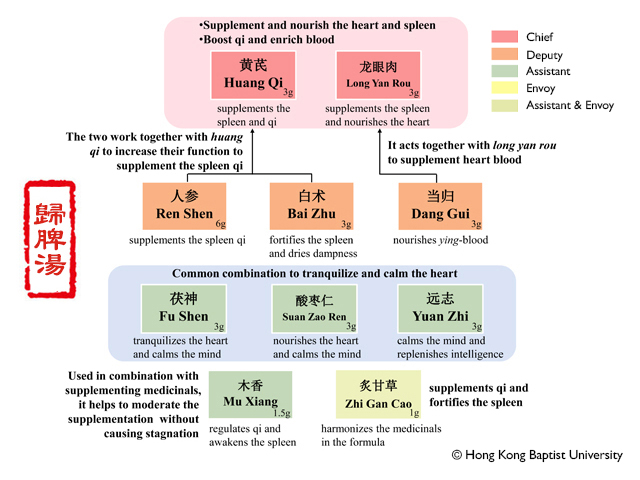
| Chief | Huang Qi |
| Boost qi and enrich blood. |
| Chief | Long Yan Rou |
| Boost qi and enrich blood. |
| Deputy | Ren Shen |
| |
| Deputy | Bai Zhu |
| |
| Deputy | Dang Gui |
| It acts together with long yan rou to supplement heart blood. |
| Assistant | Fu Shen |
| |
| Assistant | Suan Zao Ren |
| |
| Assistant | Yuan Zhi |
| |
| Assistant | Mu Xiang |
| Used in combination with supplementing medicinals, it helps to moderate the supplementation without causing stagnation. |
| Assistant&Envoy | Zhi Gan Cao |
|